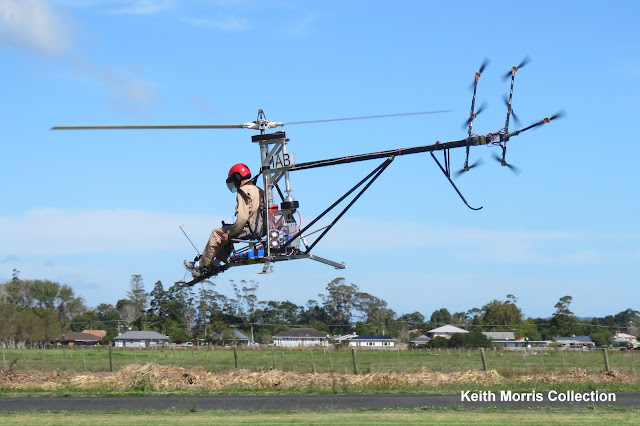Sir Minty wrote an in-depth blog post back in November 2022 covering Oskar Stielau's project to convert his Mosquito Air helicopter ZK-HNG6 to become the Electric Mosquito ZK-IAB2.
This blog post is reproduced in full below.
Check this link.
Thursday 29 December 2022
Homebuilt and Sport Helicopters of New Zealand - Electric Mosquito Air
After Oskar Stielau withdrew his Innovator Mosquito Air helicopter ZK-HNG6 from the register on 7/1/19 he had an idea of what he wanted to do with it. And that was to convert it into an electric helicopter.
Oskar is an electrical engineer so he had a head start on such a project but it still was pioneering work and he built what was probably the world's first fully electric helicopter with separate electric motors driving the main and tail rotors. The main electric motor is a Slovenian Emrax 228 that weighs 12 Kg and produces a peak power of 109 KW (but the continuous power is much less) and it is 96% efficient. Oskar mounted it in the same position as the original Rotax 2 stroke so as not to alter the mechanical drive of the machine. While the electric motor is much lighter you then have to add batteries and these consist of 96 cells weighing 40 Kg. Oskar went for medium performance batteries as the technology is improving all the time, and the Electric Mosquito was built as a proof of concept.
But when Oskar first tried out his helicopter with the main electric motor he felt all the vibrations associated with the still at that time mechanical tail rotor. Then he had a eureka moment - why not also have the tail rotor also driven by separate electric motors! So he purchased a 15Kg lifting capacity drone and with some adaption this formed the basis of the Electric Mosquito's 7 rotor anti-torque tail rotor system. And with clever programming the tail rotor speed is controlled by the main throttle thereby making flying the helicopter much easier.
The endurance is around 15 minutes and the empty weight of the Electric Mosquito is 145 Kg (which includes the 40 Kg of batteries) and the pilot can weigh up to 86 Kg giving a MAUW if 230 Kg.




No comments:
Post a Comment